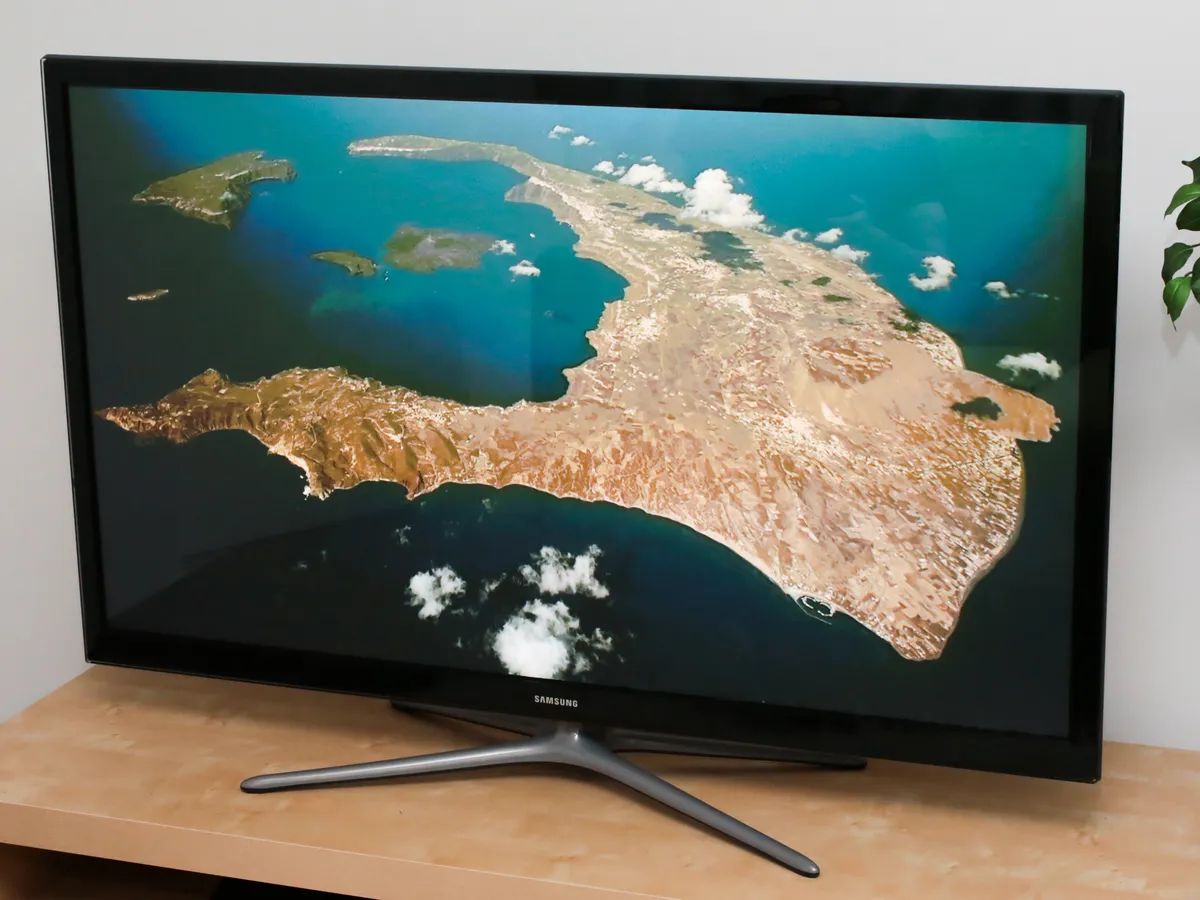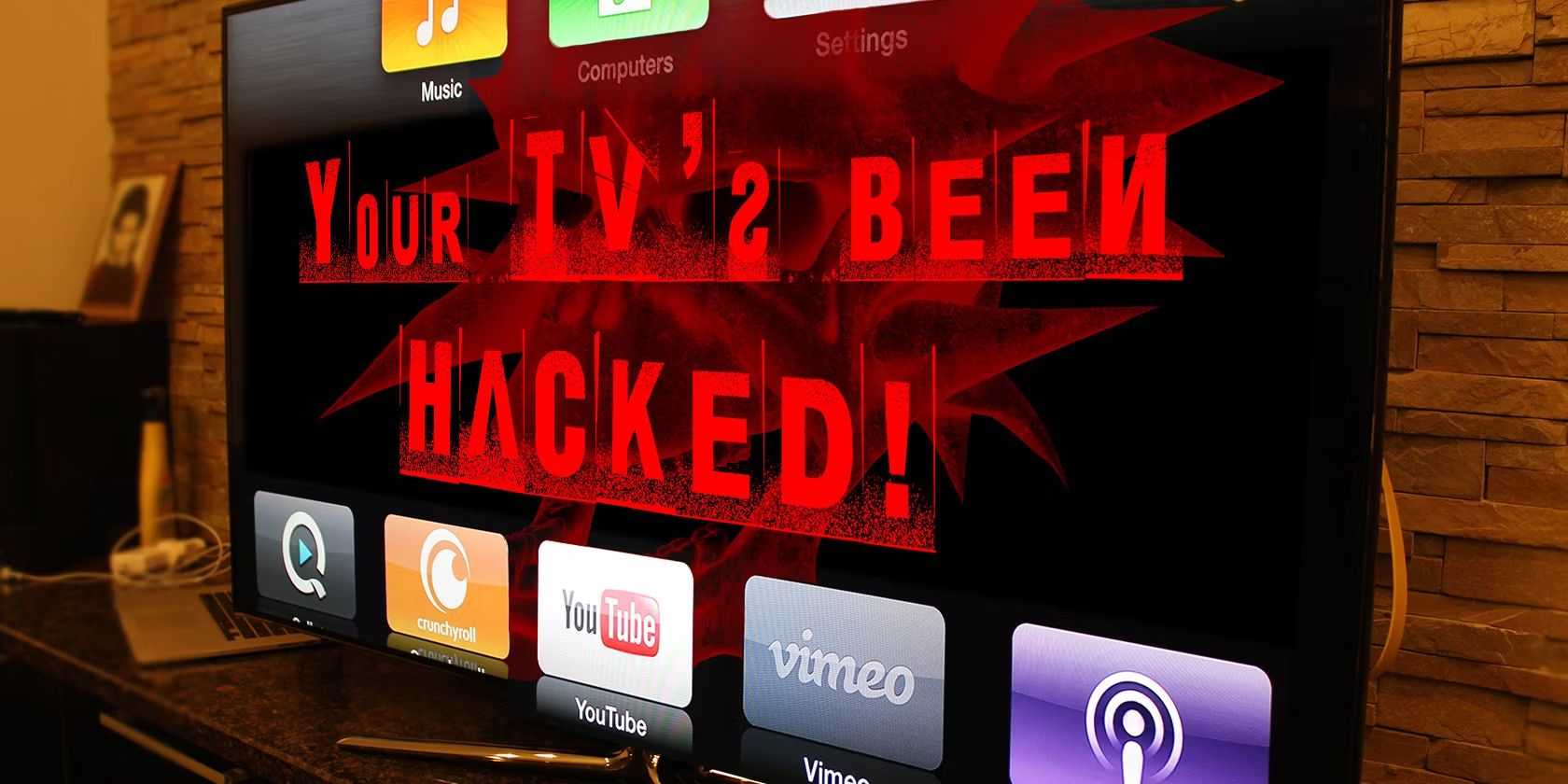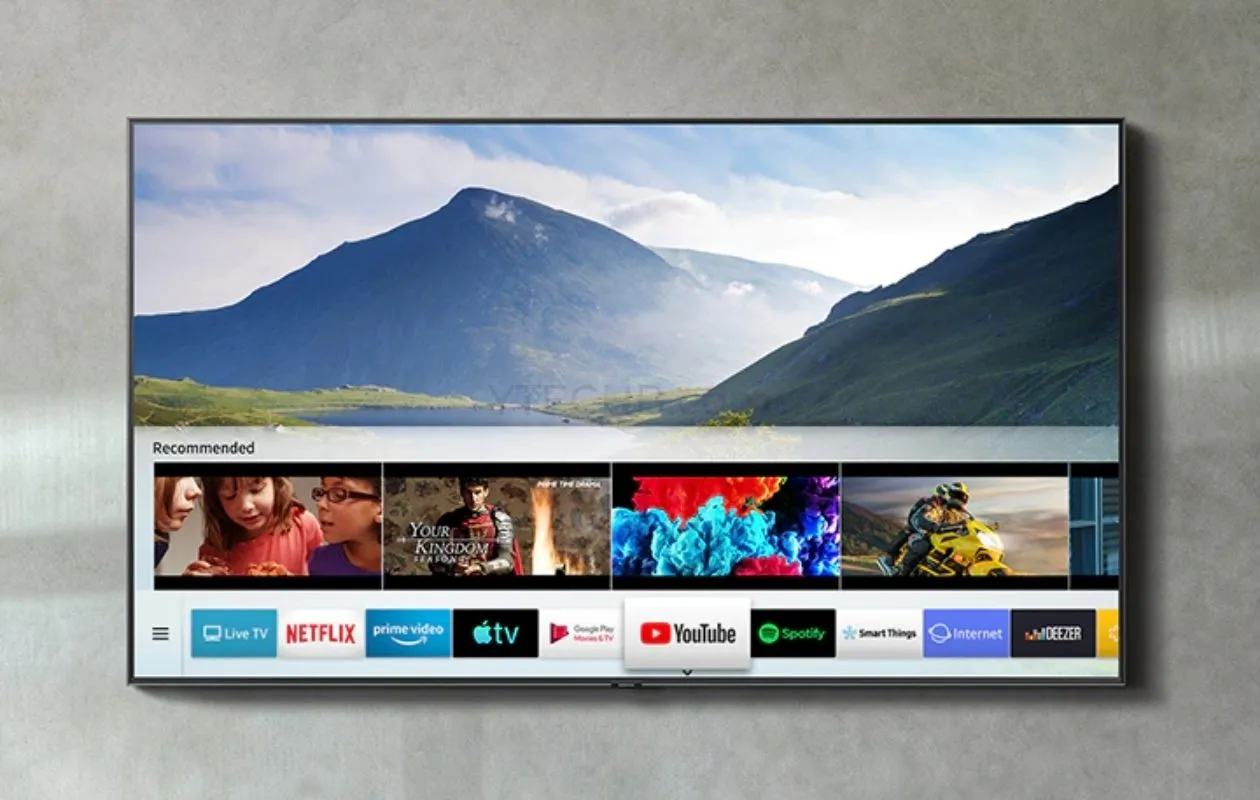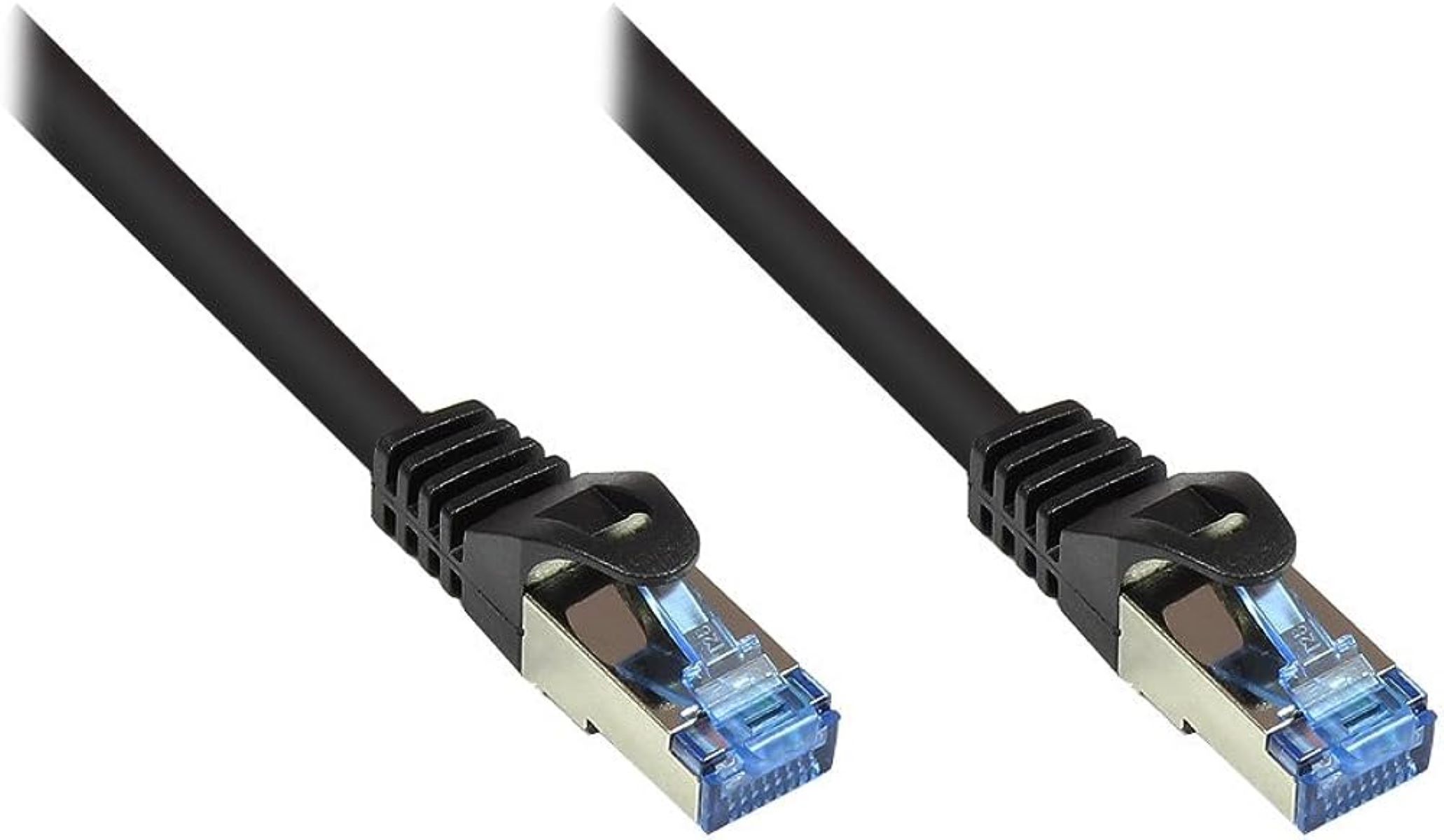Introduction
Smart TVs have become an integral part of our modern homes, offering a wide range of entertainment options and the convenience of accessing online content directly on our television screens. These advanced devices are equipped with various features such as internet connectivity, streaming capabilities, and app integration, transforming how we consume media.
However, with the increasing connectivity and complexity of these devices, there comes a concern for potential risks and vulnerabilities. While manufacturers implement security measures, there are instances where hackers exploit vulnerabilities to gain unauthorized access to smart TVs. This raises questions about the security and privacy of our personal information when using these devices.
While hacking is generally seen as a negative term, there are legitimate reasons why someone might want to hack their smart TV. It can provide benefits such as accessing restricted content, enhancing the capabilities of the TV, or even uncovering vulnerabilities and contributing to improving the security of the devices.
Before delving into the process of hacking a smart TV, it is essential to understand the risks and dangers associated with such actions. Hacking a smart TV without proper knowledge or legal considerations can lead to unintended consequences and legal complications.
This article aims to provide an overview of hacking smart TVs, including the reasons behind it, precautions to take, and steps involved. It is important to emphasize that the information provided here is for educational purposes only, and any hacking activities should be conducted legally and with the consent of appropriate parties.
Understanding Smart TVs
In order to fully grasp the concept of hacking a smart TV, it is crucial to understand what a smart TV is and how it functions. A smart TV, also known as a connected TV, is a television set that is equipped with internet connectivity and built-in software or operating systems.
Unlike traditional televisions, smart TVs have the ability to access online content, stream media from various platforms, and even run applications. They provide an all-in-one entertainment hub, allowing users to enjoy their favorite TV shows, movies, videos, and music without the need for external devices such as streaming boxes or game consoles.
Smart TVs typically come with built-in Wi-Fi capabilities or Ethernet ports, enabling them to connect to the internet wirelessly or through a wired connection. This connectivity allows users to browse the web, access online streaming services, and engage with a wide range of digital content.
One of the key features of smart TVs is the ability to install and run applications. These applications, often referred to as smart TV apps or “widgets,” provide additional functionality and entertainment options. Popular examples include streaming services like Netflix, Hulu, and YouTube, as well as social media apps and gaming applications.
Furthermore, smart TVs often incorporate voice recognition and voice control features, enabling users to control their TVs through voice commands. This allows for a more intuitive and convenient user experience, eliminating the need for manual input using a remote control or keyboard.
To enable these features, smart TVs use various technologies, such as operating systems like Android TV, webOS, Tizen, or proprietary systems developed by individual manufacturers. These operating systems provide the foundation for the user interface and app ecosystem, determining the capabilities and functionalities of the smart TV.
With the rapid advancement of technology, newer models of smart TVs are being equipped with more powerful processors, larger storage capacities, and higher resolution displays. This ensures smoother performance, faster response times, and enhanced visual quality, delivering an immersive viewing experience.
Overall, smart TVs have revolutionized how we interact with our televisions, offering a seamless integration of traditional broadcasting and online content. Understanding the functionalities and capabilities of smart TVs lays the groundwork for exploring the possibilities of hacking and customizing these devices to suit individual preferences.
Potential Risks and Dangers
While smart TVs offer a plethora of convenient features and entertainment options, they also come with their fair share of potential risks and dangers. Understanding these risks is crucial to ensure the security and privacy of users when using smart TVs.
One of the primary concerns with smart TVs is the risk of unauthorized access to personal information. Smart TVs often collect data about user preferences, browsing habits, and even voice commands, which can be exploited if the device’s security measures are compromised. This data can potentially be used for targeted advertising or even more malicious purposes, such as identity theft or fraud.
Another risk associated with smart TVs is the potential for malware and virus attacks. Because these devices are connected to the internet, they are vulnerable to malware that can be unintentionally downloaded when visiting malicious websites or downloading unverified applications. Once infected, the smart TV can become compromised, leading to a range of issues, including unauthorized access to personal data, remote control by hackers, or even turning the TV into a botnet participant.
In addition to data privacy and security concerns, smart TVs may also expose users to the risk of phishing attacks. Phishing is a method used by hackers to trick users into revealing personal information or login credentials by posing as legitimate entities, such as streaming services or app developers. If users are not vigilant, they may unknowingly provide sensitive information, which can lead to identity theft or financial loss.
Furthermore, the internet connectivity of smart TVs means that they can be potentially targeted for remote exploitation. Hackers can exploit vulnerabilities in the smart TV’s operating system or built-in software, gaining unauthorized control over the device. This can result in various consequences, including unauthorized access to personal files, manipulation of settings, or even using the smart TV as a gateway to infiltrate the home network.
It is essential for smart TV users to be aware of these risks and take necessary precautions to mitigate them. By understanding the potential dangers, users can make informed decisions when it comes to their privacy, security, and overall digital well-being.
Reasons to Hack a Smart TV
The idea of hacking may typically carry a negative connotation, but when it comes to smart TVs, there can be legitimate reasons why someone might want to hack their own device. Here are a few valid reasons to consider:
Accessing Restricted Content: Some streaming platforms or apps may have regional restrictions, limiting access to certain content based on geographical location. By hacking a smart TV, users can potentially bypass these restrictions and gain access to a wider range of content from different regions.
Enhancing Smart TV Capabilities: Hacking a smart TV opens up the possibility of customizing the device’s functions and expanding its capabilities beyond what the manufacturer intended. This can include installing third-party applications, integrating additional features, or even modifying the user interface to suit personal preferences.
Discovering Vulnerabilities: Hacking a smart TV can be a means of uncovering potential vulnerabilities or security flaws within the device. By identifying and reporting these vulnerabilities to manufacturers, users can contribute to the improvement of the overall security of smart TVs, benefiting the wider user community.
Educational and Learning Purposes: Hacking a smart TV can serve as an educational exercise to understand the inner workings of the device, including its operating system, software, and network protocols. It can be a way for individuals to acquire new skills, develop an understanding of cybersecurity, and explore the possibilities of technology.
Customizing User Experience: Hacking a smart TV provides an opportunity to personalize the user experience. Users can modify the user interface, create custom themes, or implement unique features that enhance usability and make the overall interaction with the smart TV more enjoyable.
While these reasons may be valid, it is important to note that hacking a smart TV should always be done legally and ethically, with full consent and proper knowledge. Engaging in illegal activities or hacking someone else’s smart TV without permission is a violation of privacy and can have serious legal consequences.
Before embarking on any hacking activities, it is crucial to be well-informed, take necessary precautions to protect personal information, and ensure compliance with applicable laws and regulations. It is always recommended to consult expert resources or seek professional guidance to ensure a safe and responsible approach to hacking a smart TV.
Precautions and Legal Considerations Before Hacking
Before attempting to hack a smart TV, it is crucial to take necessary precautions and consider the legal implications of such actions. Here are some key precautions and legal considerations to keep in mind:
1. Obtain Consent: Ensure you have proper consent to hack a smart TV. If it is your personal device, you have the authority to modify or customize it. However, if it belongs to someone else, hacking without their permission is illegal and violates their privacy.
2. Educate Yourself: Acquire a solid understanding of the technologies involved in smart TVs and the potential risks associated with hacking. Familiarize yourself with programming languages, network protocols, and security best practices to ensure you have the necessary knowledge and skills to proceed safely.
3. Protect Personal Information: Before hacking, back up all personal data and files on the smart TV to prevent accidental loss or damage. Additionally, take steps to ensure your personal information, such as usernames, passwords, and financial details, are protected during the hacking process.
4. Use Secure Tools and Resources: When hacking a smart TV, rely on reputable tools, software, and resources. Avoid using unauthorized or untrusted software that may contain malware or viruses, which can compromise the security of the device and your personal information.
5. Research Legal Frameworks: Familiarize yourself with laws and regulations related to hacking in your jurisdiction. Different countries have varying legal implications for hacking activities. Ensure your hacking activities comply with applicable laws to avoid legal consequences.
6. Report Vulnerabilities Responsibly: If while hacking you discover vulnerabilities or security flaws in the smart TV, report them responsibly to the manufacturer or appropriate authorities. Help improve the overall security of smart TVs by sharing your findings in a responsible and ethical manner.
7. Secure Your Network: Before hacking, ensure your home network is secure to protect against unauthorized access or data breaches. Use strong passwords, enable encryption, and keep your network equipment updated with the latest firmware to minimize vulnerabilities.
8. Stay Updated: Keep yourself updated with the latest news and developments in smart TV security. Regularly check for software updates and patches from the manufacturer to ensure your smart TV is protected from known vulnerabilities.
By taking these precautions and considering the legal implications, you can proceed responsibly and safely when hacking a smart TV. Remember, hacking activities should be conducted ethically and legally, with the goal of improving security or enhancing personal experience, while respecting the privacy of others.
Steps to Hack a Smart TV
Disclaimer: The following steps are provided for informational purposes only and should not be attempted without proper knowledge, consent, and understanding of the implications. Hacking a smart TV without authorization or for malicious purposes is illegal.
If you have the necessary knowledge, skills, and consent to hack a smart TV, here are some general steps to consider:
1. Research: Start by researching the specific make and model of your smart TV. Understand the operating system it uses, the potential vulnerabilities associated with that system, and any previous exploits or hacks that may have been reported.
2. Identify Goals: Determine the specific objectives you wish to achieve through hacking your smart TV. Whether it’s accessing restricted content, enhancing functionality, or discovering vulnerabilities, clearly define your goals to keep your hacking process focused.
3. Create a Test Environment: Set up a separate testing environment to conduct your hacking activities safely. This ensures that any potential risks or damages remain contained and doesn’t interfere with your primary smart TV or home network.
4. Gain Root Access: Depending on the smart TV’s operating system, gaining root access may be necessary to perform certain hacks or modifications. This typically involves exploiting vulnerabilities in the system to gain privileged access.
5. Install Custom Firmware: If you want to customize or enhance the functionality of your smart TV, you may choose to install custom firmware. This can unlock additional features, change the user interface, or provide access to unsupported applications.
6. Network Analysis: Conduct a network analysis of your smart TV to understand how it communicates with other devices and the internet. This can help identify potential vulnerabilities or open ports that can be exploited.
7. Exploit Vulnerabilities: Should you discover any vulnerabilities during your network analysis, you can attempt to exploit them to gain further control over the smart TV. However, it is vital to do this ethically and responsibly, ensuring you have the necessary rights and permissions.
8. Test Modifications: After making modifications or installing custom firmware, thoroughly test the changes to ensure they function as intended. This can involve checking for stability, compatibility with applications, and potential security risks.
9. Follow Security Measures: Throughout the hacking process, ensure you follow security measures to protect your smart TV and personal information. Use strong passwords, keep your firmware up to date, and apply security patches provided by the manufacturer.
10. Document and Report Findings: If you uncover any vulnerabilities or exploits during your hacking process, document your findings and report them responsibly to the manufacturer or appropriate authorities. This helps in improving the security of smart TVs for the benefit of all users.
Remember, hacking a smart TV should always be conducted legally, with consent, and for responsible purposes. Ensure you have the necessary knowledge and skills to understand the implications and risks associated with hacking a device before proceeding.
Exploiting Vulnerabilities
Exploiting vulnerabilities is a critical aspect of hacking a smart TV. Vulnerabilities are weaknesses or flaws in the operating system or network protocols that can be leveraged to gain unauthorized access or control over the device. While it is important to emphasize that hacking should always be done ethically and legally, understanding how vulnerabilities can be exploited is essential for identifying and addressing potential security risks.
One common way to exploit vulnerabilities is through the use of exploits or malicious code specifically designed to take advantage of weaknesses in the smart TV’s software or firmware. These exploits can target known vulnerabilities, such as unpatched bugs or flaws in the operating system’s code, to gain root access or execute unauthorized commands.
Another method of exploiting vulnerabilities is through social engineering techniques. This involves manipulating individuals by deceiving or tricking them into revealing sensitive information or performing actions that benefit the hacker. For example, an attacker may trick a smart TV user into unknowingly downloading and installing a malicious application that grants unauthorized access to the device.
It is important to note that exploiting vulnerabilities should only be done after obtaining appropriate consent and within the bounds of the law. Unauthorized exploitation can lead to severe consequences, including legal repercussions and harm to individual privacy.
If you are using hacking techniques to test the security of your own smart TV, consider following these guidelines:
1. Identify vulnerabilities: Conduct thorough research and analysis to identify potential vulnerabilities in your smart TV. These vulnerabilities can include weak passwords, unpatched software, or insecure network configurations.
2. Assess the impact: Evaluate the potential impact of exploiting these vulnerabilities. Understand the extent of control or access that can be gained and consider the risks involved for both yourself and your smart TV.
3. Ethical considerations: Ensure that all hacking activities are conducted ethically and legally. Avoid causing harm or compromising the privacy of others during the exploitation process.
4. Responsible disclosure: If you discover vulnerabilities that could potentially affect the wider smart TV user community, it is important to report your findings to the manufacturer or relevant organizations responsibly. This allows them to address the vulnerabilities and improve the overall security of smart TVs.
5. Stay updated: Keep yourself informed about the latest security trends, hacking techniques, and fixes for known vulnerabilities. Regularly update your smart TV’s firmware and software to protect against potential exploits.
When it comes to exploiting vulnerabilities, it is crucial to act responsibly and focus on improving security rather than causing harm. By finding and reporting vulnerabilities, you can contribute to the development of more secure smart TV systems and help protect the privacy and data of users worldwide.
Installing Custom Firmware
One of the reasons people may want to hack their smart TV is to install custom firmware. Custom firmware allows for modifications and enhancements to the device beyond its original capabilities. It can offer a range of benefits, including accessing additional features, improving performance, and customizing the user interface.
Before attempting to install custom firmware, it is crucial to understand the risks and potential consequences involved. Incorrectly installing or using unsupported firmware can lead to device malfunctions, loss of warranty, or even permanent damage to the smart TV. Therefore, it is recommended to follow these steps carefully:
1. Research Compatible Firmware: Start by researching custom firmware options that are compatible with your specific smart TV make and model. Visit reputable forums, developer websites, or online communities dedicated to smart TV hacking to find the most suitable firmware for your device.
2. Backup Your Data: Before proceeding with custom firmware installation, it is essential to back up all your data and settings. This will help you restore your smart TV to its original state in case anything goes wrong during the installation process.
3. Verify Firmware Source: Ensure that the custom firmware you are planning to install comes from a trusted and reliable source. Verify its authenticity and legitimacy to minimize the risk of downloading malware-infected or malicious firmware.
4. Understand Installation Instructions: Carefully read and understand the installation instructions provided by the firmware developer. Make sure that you are following the correct procedures, including any specific requirements or precautions mentioned in the instructions.
5. Enter Debug or Developer Mode: Smart TVs often require enabling “debug mode” or “developer mode” to install custom firmware. This allows the installation of unsigned firmware or modified software. Refer to the user manual or online resources for instructions on how to access these modes.
6. Flash the Firmware: Use the recommended tools and procedures to flash the custom firmware onto your smart TV. This typically involves using a USB drive or connecting to the device via network or computer to transfer the firmware files and initiate the installation process.
7. Follow Post-installation Steps: After successfully installing the custom firmware, follow any post-installation steps recommended by the firmware developer. This may include configuring settings, updating drivers, or installing additional applications to maximize the benefits of the custom firmware.
8. Regularly Update Firmware: Maintain your custom firmware installation by regularly checking for updates from the firmware developer. These updates may include bug fixes, security patches, or performance improvements. Keeping your firmware up to date helps to ensure a stable and secure experience.
Remember, installing custom firmware comes with risks, and it can void your device warranty. Make sure you fully understand the process, follow instructions carefully, and proceed at your own responsibility. It is always prudent to consult expert resources or seek assistance from experienced individuals to ensure a successful custom firmware installation.
Accessing Restricted Content
One compelling reason why some people may want to hack their smart TV is to gain access to restricted content. Streaming platforms and apps often have regional restrictions, limiting access to specific content based on geographical location. By hacking a smart TV, users may have the potential to bypass these restrictions and enjoy a wider range of content from different regions.
It is important to note that accessing restricted content through hacking should be done legally and responsibly. Engaging in illegal activities or violating copyright laws can result in severe consequences. With that in mind, here are a few methods that might be employed for accessing restricted content:
Virtual Private Network (VPN): One common approach is to use a Virtual Private Network (VPN), which allows users to mask their IP address and appear as if they are browsing from a different country. By connecting to a VPN server in a desired region, users can access restricted content specific to that location.
DNS Proxy: Another method is to use a DNS Proxy service that intercepts and reroutes the DNS requests associated with the streaming platforms. This allows users to bypass regional restrictions and access content that is otherwise unavailable in their geographical area.
Sideloading Apps: In some cases, certain apps or content may be restricted to specific smart TV models or regions. By sideloading apps, users can manually install third-party applications that may provide access to restricted content or additional features not officially supported by the manufacturer.
Emulating Devices: Emulating devices can also help access restricted content. By emulating certain devices or platforms, users can fool streaming platforms into believing that they are using a supported device, thus unlocking access to content that may not be available on their actual smart TV.
Legal Streaming Services: It is essential to consider legal options for accessing content. Many streaming platforms are expanding their catalogs globally, making content available to a wider audience. Subscribing to official streaming services ensures access to content without the need for hacking or bypassing restrictions.
It is important to understand that accessing restricted content through hacking should always be done legally and with respect to intellectual property rights. Additionally, the effectiveness of these methods may vary depending on the streaming platform and the specific region or content you are looking to access.
Always ensure that you are abiding by the terms of service of the streaming platforms and any applicable copyright laws. Respect the rights of content creators and consider supporting them through legal means.
Lastly, keep in mind that streaming platforms are actively working to prevent unauthorized access and may employ measures to detect and block users who attempt to bypass restrictions. Be aware of the potential risks and consequences associated with accessing restricted content through hacking, and make informed decisions accordingly.
Enhancing Smart TV Capabilities
One of the reasons why individuals may choose to hack their smart TV is to enhance its capabilities beyond what the manufacturer originally intended. By customizing and modifying the device, users can unlock additional features, improve performance, and tailor the user experience to their preferences. Here are some common ways to enhance the capabilities of a smart TV through hacking:
Installing Third-Party Apps: Hacking a smart TV often involves installing third-party applications that are not available through the official app store. These apps can expand the range of entertainment options by providing access to unique content or services that are not natively supported by the smart TV’s operating system.
Customizing the User Interface: Hacking allows users to personalize the smart TV’s user interface, making it more intuitive and visually appealing. One can modify the layout, customize themes, or change the overall look and feel of the interface to suit their personal preferences.
Enabling New Features: Hacked smart TVs can potentially unlock new features or functions that were not originally supported. This may include adding support for different file formats, improving audio/video playback capabilities, or integrating additional smart home functionalities.
Streaming from Alternative Sources: By hacking a smart TV, users may be able to access streaming services or content from alternative sources. This could involve using plugins or add-ons that provide access to free or subscription-based content that is not officially supported.
Improving Performance: Hacking can involve optimizing the performance of a smart TV by removing unnecessary bloatware, tweaking system settings, or even upgrading hardware components. These modifications can result in faster load times, smoother playback, and improved overall performance.
Home Automation Integration: Smart TVs can be integrated with home automation systems or personal assistants through hacking. This allows users to control their smart TV through voice commands, automate tasks, and enjoy a more seamless smart home experience.
It is important to approach hacking with caution and ensure that modifications and enhancements are done safely and responsibly. Consider the following guidelines to enhance the capabilities of your smart TV:
1. Research and Understand: Familiarize yourself with the risks, limitations, and potential benefits associated with the specific hacks or modifications you plan to make. Thoroughly research the tools, software, and procedures involved to ensure you have a clear understanding of what you are attempting to achieve.
2. Back Up Data: Before making any modifications, back up your smart TV’s data, settings, and configurations to avoid losing any important information or encountering irreparable issues.
3. Verify Compatibility: Ensure that any third-party applications or firmware modifications you plan to install are compatible with your smart TV’s make and model. Incompatible software can lead to system instability or even permanent damage.
4. Follow Installation Instructions: Carefully follow the installation instructions provided by the developers or the hacking community. Skipping steps or incorrectly executing procedures can lead to undesirable outcomes.
5. Exercise Caution: Be cautious when granting permissions or allowing unknown sources on your smart TV. It is crucial to verify the source and integrity of any modifications or applications you install.
By responsibly enhancing the capabilities of your smart TV, you can create a more personalized and immersive entertainment experience tailored to your preferences and needs.
Conclusion
Hacking a smart TV can provide opportunities to access restricted content, enhance capabilities, and improve the overall user experience. However, it is important to approach hacking responsibly, ethically, and legally. Before attempting any hacking activities, ensure you have the necessary knowledge, consent, and understanding of the potential risks involved.
Understanding the functionalities and vulnerabilities of smart TVs is essential for making informed decisions when it comes to hacking. It is crucial to weigh the benefits against the potential dangers, such as compromising personal data, violating privacy, or even facing legal consequences.
If you choose to pursue hacking, take precautions to protect your personal information and follow security best practices. Respect intellectual property rights, abide by the terms of service of streaming platforms, and consider legal options for accessing content. If you discover vulnerabilities, report them responsibly to contribute to improving the security of smart TVs for everyone.
Remember, hacking should always be conducted within legal boundaries and with the consent of appropriate parties. It is important to stay updated with the latest security trends, maintain awareness of privacy concerns, and use hacking techniques responsibly to help create a safer and more personalized smart TV experience for all users.
To conclude, hacking a smart TV should be approached with caution and a responsible mindset. By exercising proper knowledge, ethics, and legal compliance, hacking can provide opportunities for exploration, customization, and contributing to the improvement of smart TV technology.

























